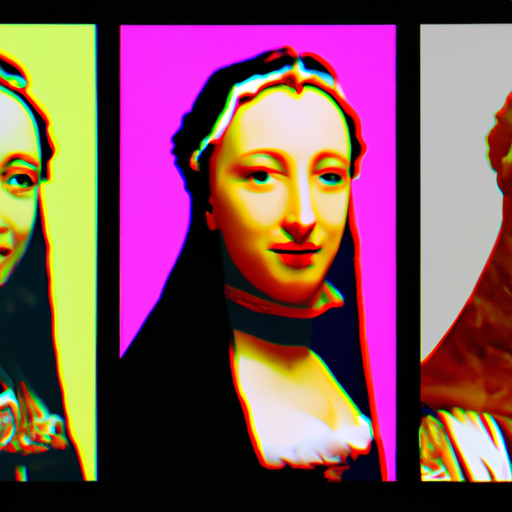
-
Table of Contents
The Renaissance Revival in Contemporary Design

The Renaissance, a period of cultural and artistic rebirth that spanned from the 14th to the 17th century, continues to inspire and influence contemporary design. The revival of Renaissance elements in modern design can be seen in various fields, including architecture, interior design, fashion, and graphic design. This article explores the reasons behind the resurgence of Renaissance aesthetics, the key characteristics of Renaissance-inspired design, and the impact it has on the contemporary design landscape.
The Renaissance: A Timeless Inspiration
The Renaissance was a transformative period in human history, marked by a renewed interest in classical knowledge, humanism, and artistic expression. It was a time of great innovation and creativity, with artists and thinkers pushing the boundaries of what was possible. The legacy of the Renaissance can still be felt today, as its ideas and aesthetics continue to resonate with contemporary designers.
One of the main reasons for the enduring appeal of Renaissance design is its emphasis on beauty, harmony, and proportion. Renaissance artists and architects sought to create works that were not only visually pleasing but also reflected a deeper understanding of the natural world. This focus on balance and symmetry is something that contemporary designers also strive for, as they seek to create spaces and objects that are both functional and aesthetically pleasing.
Renaissance-Inspired Architecture
One of the most prominent areas where the Renaissance revival can be seen is in architecture. Many contemporary buildings draw inspiration from Renaissance architectural elements, such as domes, arches, and columns. These features not only add a sense of grandeur and elegance to modern structures but also pay homage to the rich architectural heritage of the Renaissance.
For example, the Guggenheim Museum in Bilbao, Spain, designed by architect Frank Gehry, incorporates Renaissance-inspired elements in its design. The museum’s curvilinear form and use of reflective materials echo the fluidity and dynamism often found in Renaissance architecture. This fusion of old and new creates a visually striking building that captures the spirit of the Renaissance while embracing contemporary design principles.
Renaissance-Inspired Interior Design
The Renaissance revival is also evident in interior design, where elements such as ornate moldings, rich fabrics, and intricate patterns are used to create luxurious and opulent spaces. Renaissance-inspired interiors often feature elaborate chandeliers, gilded furniture, and classical motifs, all of which contribute to a sense of grandeur and sophistication.
One notable example of Renaissance-inspired interior design is the Palace of Versailles in France. The palace’s opulent interiors, with their intricate tapestries, ornate furniture, and lavish decorations, reflect the grandeur and excess of the Renaissance period. Today, designers continue to draw inspiration from the Palace of Versailles, incorporating Renaissance elements into contemporary interiors to create spaces that exude elegance and luxury.
Renaissance-Inspired Fashion
The influence of the Renaissance can also be seen in the world of fashion. Designers often draw inspiration from Renaissance clothing, incorporating elements such as corsets, ruffles, and voluminous sleeves into their designs. Renaissance-inspired fashion is characterized by its attention to detail, use of luxurious fabrics, and emphasis on craftsmanship.
One fashion designer known for his Renaissance-inspired creations is Alexander McQueen. McQueen’s designs often feature intricate embroidery, corsetry, and dramatic silhouettes, all of which pay homage to the opulence and craftsmanship of Renaissance fashion. His collections showcase the enduring appeal of Renaissance aesthetics in the modern fashion industry.
Renaissance-Inspired Graphic Design
The Renaissance revival extends to the world of graphic design, where designers often incorporate Renaissance-inspired elements into their work. Renaissance typography, with its ornate letterforms and decorative flourishes, is often used to add a touch of elegance and sophistication to contemporary designs.
One example of Renaissance-inspired graphic design is the logo for the luxury brand Dolce & Gabbana. The logo features a decorative, calligraphic script reminiscent of Renaissance typography. This choice of typography reflects the brand’s commitment to timeless elegance and luxury, drawing on the enduring appeal of Renaissance aesthetics.
The Impact of Renaissance Revival
The resurgence of Renaissance aesthetics in contemporary design has had a profound impact on the design landscape. By drawing inspiration from the past, designers are able to create works that are both timeless and relevant. The use of Renaissance elements adds a sense of history and tradition to contemporary designs, creating a connection to the rich cultural heritage of the Renaissance.
Furthermore, the Renaissance revival allows designers to explore new possibilities and push the boundaries of what is considered modern. By combining Renaissance aesthetics with contemporary design principles, designers are able to create unique and innovative works that capture the essence of both past and present.
Key Takeaways
- The Renaissance continues to inspire and influence contemporary design.
- Renaissance design is characterized by its emphasis on beauty, harmony, and proportion.
- Renaissance-inspired elements can be seen in architecture, interior design, fashion, and graphic design.
- The resurgence of Renaissance aesthetics adds a sense of history and tradition to contemporary designs.
- The Renaissance revival allows designers to create unique and innovative works that capture the essence of both past and present.
In Conclusion
The Renaissance revival in contemporary design is a testament to the enduring appeal of Renaissance aesthetics. By drawing inspiration from the past, designers are able to create works that are both timeless and relevant. Whether it is in architecture, interior design, fashion, or graphic design, the influence of the Renaissance can be seen in the attention to detail, emphasis on craftsmanship, and pursuit of beauty that characterizes contemporary design. The Renaissance continues to inspire and shape the world of design, reminding us of the timeless power of creativity and innovation.
